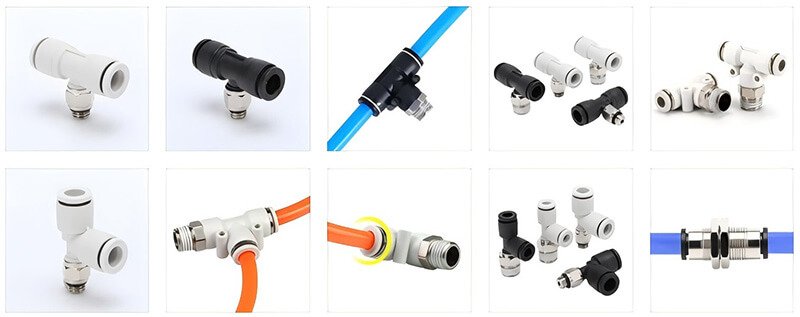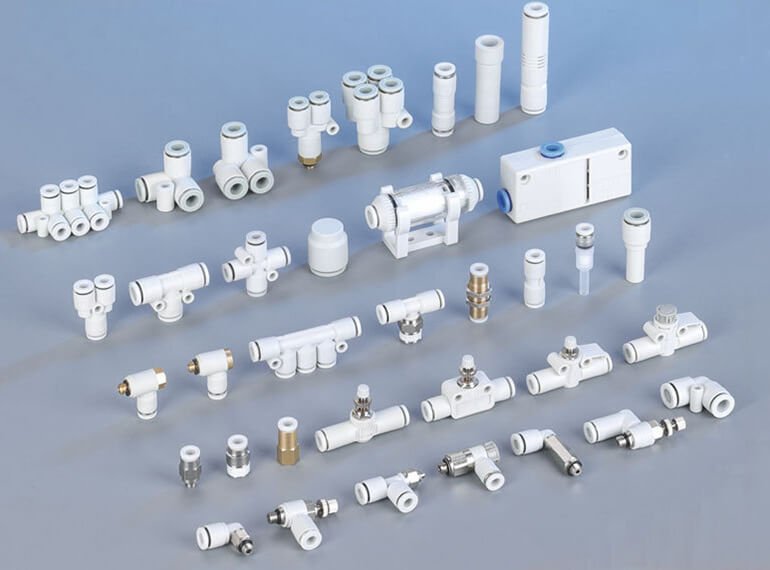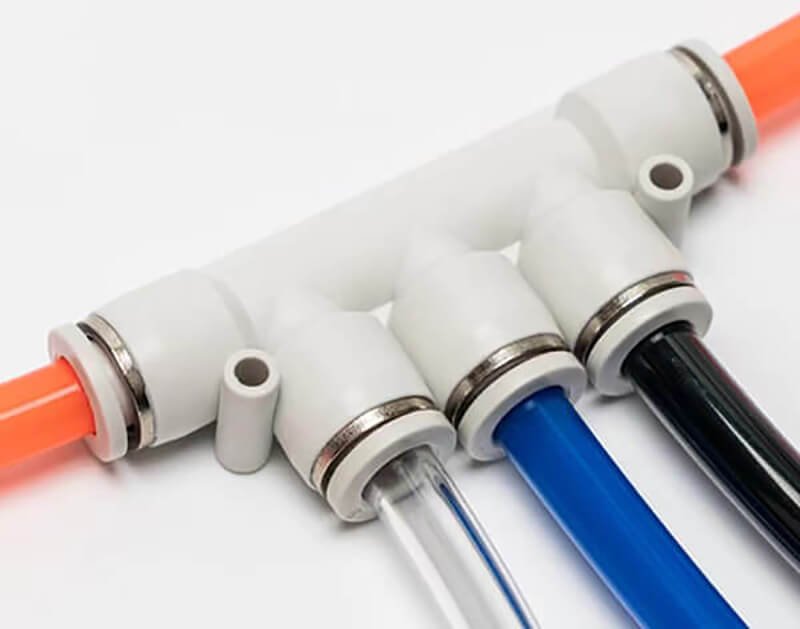When it comes to pneumatic systems, selecting the right fittings and connectors can significantly affect both the performance and cost-effectiveness of your operations. While the upfront cost of these components may seem minimal, the long-term financial impact of choosing the wrong fittings can be substantial.
In industries where efficiency, reliability, and safety are key, making an informed decision about pneumatic fittings is essential. Poor choices can lead to downtime, leaks, and even safety risks, all of which can increase operational costs. On the other hand, selecting the right fittings can help avoid unnecessary repairs, improve system performance, and reduce ongoing maintenance costs.
This article explores the cost implications of choosing the right pneumatic fittings for your system and highlights why it is crucial to focus on both the initial investment and the long-term savings.
The Role of Quality in Cost
When selecting pneumatic fittings, one of the most important factors to consider is quality. The quality of the fittings directly influences both the initial cost and long-term operational costs of your system.
Why Quality Matters
High-quality pneumatic fittings are built to withstand the demanding conditions of compressed air systems, such as high pressures and temperature fluctuations. Choosing fittings made from durable materials ensures that they remain effective over time and do not compromise the system’s efficiency.
The Impact of Quality on Maintenance Costs
Cheap or low-quality fittings may save money in the short term, but they often lead to frequent maintenance issues. Over time, these fittings may develop leaks or wear out, causing system downtime and increased repair costs. For instance, a single leaky fitting can result in lost productivity due to air pressure loss, which can quickly add up in terms of energy waste and maintenance time.
The Long-Term Cost Savings of Quality Fittings
Investing in high-quality fittings reduces the need for regular repairs and maintenance, ultimately saving money in the long run. Reliable fittings ensure consistent performance, which translates into higher efficiency and lower energy consumption. Moreover, they extend the lifespan of your pneumatic system, resulting in fewer replacements and reduced overall operating costs.

Initial vs. Long-Term Costs
When choosing pneumatic fittings, it’s important to consider both the initial costs and the long-term expenses. The decision you make today can have significant effects on your system’s overall cost-effectiveness in the future.
Initial Costs: Low or High?
At first glance, low-cost pneumatic fittings may seem like an appealing option for your budget. These fittings may have a lower upfront price, which can make them an attractive choice, especially when funds are limited.
However, this initial savings can be deceptive. While the purchase price is lower, cheaper fittings often come with trade-offs in terms of quality and durability. In the long run, this can result in higher overall costs.
Long-Term Costs: Why Quality Pays Off
The real cost of pneumatic fittings comes from their performance over time. Choosing low-quality fittings may result in frequent repairs, replacements, and even system downtime. Leaks, breakdowns, and energy waste due to inefficient fittings can significantly increase operational costs.
On the other hand, opting for higher-quality fittings may require a larger initial investment, but they provide long-term savings. High-quality fittings last longer, reduce the need for frequent replacements, and help keep your system running efficiently. Over time, you will save on maintenance, energy costs, and labor—making the upfront cost worthwhile.
Total Cost of Ownership (TCO)
A better way to evaluate the cost of pneumatic fittings is by calculating the Total Cost of Ownership (TCO). TCO includes not only the purchase price but also installation costs, maintenance, repairs, and energy consumption. High-quality fittings tend to have a lower TCO because they reduce maintenance and energy use, even though they may cost more initially.
In the long run, investing in better-quality fittings will help reduce the total cost of operating your pneumatic system, making them the more cost-effective choice.
The Impact of Incorrect Fittings
Choosing the wrong pneumatic fittings can lead to a range of issues that increase costs and decrease the efficiency of your system. It’s crucial to understand the potential costs of errors when selecting the right components.
Mismatched Fittings Lead to Leaks
One of the most common problems caused by incorrect fittings is leakage. When fittings are the wrong size or type for your system, they may not create a proper seal, leading to air leaks. These leaks can cause a loss of pressure, reducing the efficiency of your system and wasting energy. The result? Increased energy costs and lower overall performance.
Pressure Loss and System Inefficiency
If the fittings are not suitable for the pressure levels in your system, you may experience pressure loss. This reduces the effectiveness of the entire pneumatic system, as tools and machinery may not function optimally. This can cause delays in production and can increase the time and cost required to finish tasks.
Increased Wear and Tear on Components
Incorrect fittings can cause additional strain on other components in the system. For example, mismatched fittings may lead to vibration, stress, or even damage to pipes and other parts of the system. Over time, this can result in premature wear and tear, leading to costly repairs and replacements.
Safety Risks and Legal Costs
Another serious consequence of using incorrect fittings is the potential safety risk. Poorly fitted components can lead to accidents, such as explosions or hazardous leaks, especially in high-pressure systems. These issues can result in injuries, property damage, and legal costs from fines or lawsuits.

Maintenance Costs and Downtime
Maintenance and downtime are significant factors in the total cost of a pneumatic system. The choice of pneumatic fittings can have a major impact on both the frequency and cost of maintenance activities, as well as the amount of time the system is out of service.
How Incorrect Fittings Affect Maintenance
Using the wrong or low-quality fittings increases the likelihood of leaks, failures, and system breakdowns. These issues often require constant attention and repairs, which drive up maintenance costs. Frequent repairs not only waste money but also interrupt operations, affecting productivity.
For example, fittings that are not properly sealed or made from inferior materials can deteriorate quickly. As a result, you’ll need to replace components more often, which can lead to higher maintenance bills and unnecessary downtime.
Impact of Downtime on Business
Downtime is one of the most costly consequences of using improper pneumatic fittings. Even short periods of system failure can disrupt the workflow, cause delays, and result in lost production time. This not only impacts profits but can also damage your reputation with clients or partners who depend on timely delivery.
On top of that, there are often hidden costs related to downtime, such as the need for emergency repairs, the loss of employee productivity, and the cost of overtime to fix problems quickly.
Preventing Downtime with Quality Fittings
By selecting high-quality fittings that are designed to withstand the demands of your pneumatic system, you can reduce the likelihood of failures and ensure your system runs smoothly. Reliable fittings minimize the risk of leaks, pressure loss, and other issues that lead to maintenance and downtime, resulting in lower operational costs over time.
Energy Efficiency and Operating Costs
The energy efficiency of a pneumatic system is closely linked to the quality of the fittings used. Well-chosen fittings help ensure smooth airflow and maintain pressure, which directly impacts the system’s energy consumption and overall operating costs.
Energy Waste Caused by Leaks and Inefficiency
Leaks are one of the most common causes of energy loss in pneumatic systems. When fittings are improperly sized or made from low-quality materials, they may not form a proper seal. This leads to air leakage, forcing the compressor to work harder to maintain the correct pressure. As a result, your system consumes more energy, which increases operating costs.
Moreover, poor-quality fittings may cause pressure drops, further reducing efficiency and increasing the energy required to keep the system running. These inefficiencies can significantly raise energy bills over time.
How Proper Fitting Selection Improves Efficiency
Choosing the right pneumatic fittings helps maintain a tight seal, ensuring that air flows efficiently throughout the system. This reduces energy consumption, as the system doesn’t need to work harder to compensate for leaks or pressure loss. By minimizing unnecessary energy use, you can keep operating costs low and improve the overall performance of your system.
Additionally, high-quality fittings are typically designed to withstand a range of operating conditions, such as high pressure and extreme temperatures. This durability ensures that your system operates at optimal efficiency over time, further contributing to energy savings.
Long-Term Savings on Energy Costs
Although high-quality fittings may have a higher initial cost, they can save you a considerable amount on energy bills in the long run. With fewer leaks, less pressure loss, and more efficient airflow, your system will require less energy to function, leading to significant long-term savings on operating costs.

Selecting the Right Fitting for the Job
Choosing the right pneumatic fitting is crucial to ensure system efficiency, safety, and cost-effectiveness. A fitting that is well-suited to the specific requirements of your system can help avoid many of the issues that lead to increased costs. Here’s what to consider when selecting the right fitting:
Consider the Application
Different pneumatic systems have different needs. For example, a high-pressure system will require fittings that are built to withstand greater stress and more intense conditions. On the other hand, systems with lower pressures may not require fittings that are as robust but will still need reliable seals to prevent leaks.
Factors to Consider
When selecting a fitting, keep the following in mind:
- Material: Fittings come in a variety of materials, including brass, stainless steel, and plastic. Consider the environment (e.g., high temperature, corrosion) and choose a material that is compatible with your system’s needs.
- Size: Proper sizing is essential for a secure connection. Using fittings that are too small or too large can lead to pressure loss or leaks.
- Temperature and Pressure Rating: Ensure that the fitting you choose can handle the system’s temperature and pressure conditions. If the fitting is not rated for the correct pressure, it can result in system failure and safety hazards.
- Ease of Installation and Maintenance: Some fittings are easier to install and maintain than others. Push-to-connect fittings, for example, can be installed quickly and require less maintenance, which can be an advantage in systems that need frequent changes or updates.
Consulting Experts
If you’re unsure about which fitting is best for your system, it’s always a good idea to consult with a supplier or industry expert. They can help you choose fittings that are not only compatible but also designed for long-term reliability and efficiency.
Conclusion
Selecting the right pneumatic fittings is not just about the initial cost but also about the long-term savings and efficiency it brings to your system. While it might be tempting to choose the cheapest option, the reality is that low-quality fittings can result in higher maintenance costs, downtime, and energy inefficiency.
By investing in high-quality, correctly-sized fittings that are suitable for your system’s requirements, you can avoid common issues like leaks, pressure loss, and unnecessary repairs. These small components play a significant role in ensuring the smooth operation of your pneumatic system.
To minimize overall costs, it’s essential to balance the upfront price with the long-term benefits of reliable, efficient fittings. By carefully considering your system’s needs and consulting with experts, you can ensure that your investment in pneumatic fittings will lead to a cost-effective and efficient system that performs optimally for years to come.


